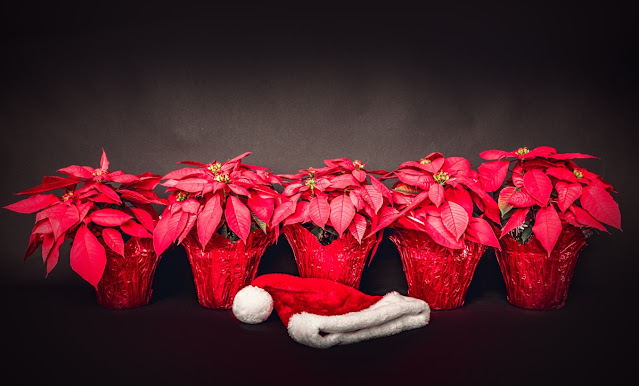What is Mistletoe and Why do we Kiss Under it at Christmas?
Greenery and plants including holly, laurel, boxwood bushes, poinsettias, pine trees and mistletoe, play important roles in many of our holiday celebrations. Kissing under the mistletoe is one Christmastime’s most romantic – and most unusual - traditions. But what is mistletoe and how did it become such a fabled part of Christmas while being mostly ignored the rest of the year?
Unlike most other holiday flowers, mistletoe isn’t exactly known
for its beauty. In fact, the infamous yuletide plant is an invasive shrub that
grows from the dung of birds and extracts nutrients from trees. While that may
not be a glowing introduction to mistletoe, it does begin to explain why this
plant has held people’s fascination for so long.
While it is true that mistletoe is semi-parasitic and could
eventually kill its host plant, it is generally not considered a serious enough
threat, in most cases, to warrant control measures. In fact, there is evidence
that the plant could have benefits for birds as well as humans.
Several studies – including one from Billabong Creek in New
South Wales, Australia and another from central Mexico have shown a significant
drop in the populations of birds and other species in areas where scientists removed
mistletoe from the ecosystem while populations increased or stayed the same in
areas with mistletoe.
Those findings, along with other studies suggest that mistletoe
is a keystone species that not only plays a critical role in its ecosystem but may
also provide some promising health benefits to humans. Doctors at Johns Hopkins
School of Medicine are studying mistletoe’s effects on cancer patients as a way
to relieve side effects of chemotherapy, and physicians in Europe are able to prescribe
mistletoe to their patients.
How did it become a holiday tradition?
The earliest documented cases of kissing under the mistletoe
date back to 16th century England where it was a very popular custom
at the time, but it likely started even earlier. One Norse myth claims people began
kissing under the plant as a peace offering after the god Balder was killed with
a mistletoe arrow. Early European were so enamored with mistletoe plants that
they became interwoven into myths, legends, and religious beliefs.
Literature is filled with examples of different uses that
range anywhere from preventing fires to scaring away demons and protecting livestock
from witchcraft. Throughout the ages, mistletoe was also commonly tied to fertility,
which may be where the tradition started. Washington Irving wrote that men
commonly gave women a kiss for each berry hanging on the mistletoe above them –
plucking one off for each kiss.
Despite mistletoe’s continued popularity in Christmas carols,
songs, and tales, the plant is not nearly as common as it used to be even
though nearly everyone has heard of it. And, unlike the jolly old elf, there is
nothing seasonal about mistletoe - it does not disappear when the season is
over, it is simply forgotten about for several months each year until it makes
its appearance in doorways across the world next year.
It’s beginning to look a lot like Christmas at Ballard Blossom! Start your holiday shopping today with our incredible selection of holiday flowers and gifts. We offer same-day delivery in Seattle, WA, and surrounding areas for birthdays, anniversaries, new babies, get well soon, sympathy, or even just because. Call us today at (206) 782-4213 or shop online 24/7.




Comments
Post a Comment